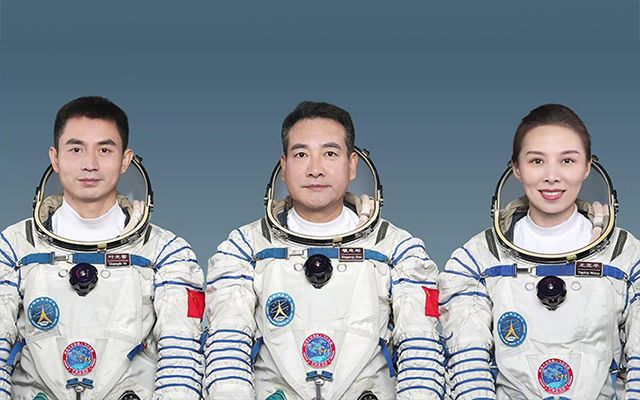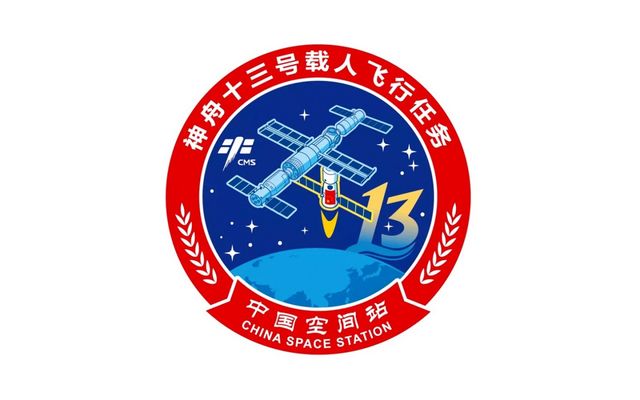According to the China Manned Space Engineering Office on the 14th, the Shenzhou 13 manned spacecraft has completed all the scheduled tasks, and will choose an opportunity to evacuate the core module assembly of the space station in the near future and return to the Dongfeng landing site. At present, the Shenzhou 13 crew has made various preparations for the spacecraft’s evacuation, and the Dongfeng landing site and engineering-related systems are making preparations for the return of the astronauts.
On October 16, 2021, astronauts Zhai Zhigang, Wang Yaping and Ye Guangfu took the Shenzhou 13 manned spacecraft into the Tianhe core module at the Jiuquan Satellite Launch Center, becoming the second batch of astronauts to “stay” in the Chinese space station.
Introduction to Shenzhou 13
At 0:23 on October 16, 2021, the Long March 2 F Yao 13 carrier rocket carrying the Shenzhou 13 manned spacecraft was precisely ignited and launched at the scheduled time at the Jiuquan Satellite Launch Center. After about 582 seconds, the Shenzhou 13 The manned spacecraft was successfully separated from the rocket and entered the predetermined orbit. The three astronauts Zhai Zhigang, Wang Yaping and Ye Guangfu were successfully sent into space. The flight crew was in good condition and the launch was a complete success. At 6:56 on October 16, the Shenzhou 13 manned spacecraft and the space station assembly completed an autonomous rapid rendezvous and docking. On November 5, according to the China Manned Space Engineering Office, the Shenzhou 13 astronaut crew will choose an opportunity to perform the first out-of-vehicle activity in the near future. It was reported on November 7 that the Shenzhou 13 flight crew conducted the first on-orbit emergency evacuation drill; on the same night, the Shenzhou 13 astronaut crew carried out the evacuation activities. At 20:00 on the same day, according to CCTV news, astronaut Zhai Zhigang of Shenzhou 13 had already left the cabin.
On December 26, 2021, the Shenzhou 13 astronaut crew was carrying out the second out-of-vehicle activity.
Shenzhou 13 Spacecraft Features
The Shenzhou 13 manned spacecraft will achieve multiple firsts, that is, the first time it will rendezvous and dock with the three-cabin complex in an autonomous and rapid radial direction, the first long-term in-orbit docking for 6 months, and the long-term in-orbit flight of four manned spacecraft to form a complex . The Eighth Institute of China Aerospace Science and Technology Corporation is responsible for the power supply sub-system, docking mechanism sub-system, propulsion module structure and final assembly, measurement and control communication subsystem, overall circuit sub-system propulsion module cable network and three-cabin power distributor for Shenzhou 13.
For the first time, Shenzhou 13 will rendezvous with the 49-ton space station assembly in an autonomous and rapid radial direction.
Shenzhou 13 Manned Mission

According to reports, the Shenzhou 13 mission will achieve five mission objectives. Compared with the Shenzhou 12 mission, the Shenzhou 13 mission is different in the following aspects:
First, the manned spacecraft will use the method of autonomous rapid rendezvous and docking, and will dock the space station radially for the first time;
The second is that the Chinese space station will realize the combined operation of a core module, 2 cargo spaceships, and a manned spaceship, a total of 4 aircraft;
The third is that the astronauts will stay in orbit for 6 months for the first time, which is also the normal residence period of the astronaut crew during the operation of the space station;
Fourth, Chinese female astronauts will be stationed in the Chinese space station for the first time. Astronaut Wang Yaping will also become China’s first female astronaut to carry out extravehicular activities, and the Shenzhou 13 crew will also include China’s first male and female astronauts.
Fifth, on the basis of the Shenzhou 12 mission, further carry out more space science experiments and technical experiments, and produce high-level scientific results;
Sixth, the spacecraft and rockets carrying out the mission are directly transferred from the backup state of emergency standby to the launch state at the launch site. These differences are also the challenges we will face.
Shenzhou 13 Manned Spacecraft Return to Mission
On February 9, 2022, at a press conference in Beijing, it was learned that the Shenzhou 13 manned spacecraft will adopt a rapid return plan for the first time, and plans to perform a return mission in mid-April 2022.
On April 14, 2022, according to the China Manned Space Engineering Office, the Shenzhou 13 manned spacecraft has completed all its scheduled tasks and will choose an opportunity to evacuate the core module assembly of the space station in the near future and return to the Dongfeng landing site. At present, the Shenzhou 13 crew has made various preparations for the spacecraft’s evacuation, and the Dongfeng landing site and engineering-related systems are making preparations for the return of the astronauts.
Timeline Of The Return Of Shenzhou 13 Manned Spacecraft
- April 15: Shenzhou 13 will be evacuated from the core module assembly of the space station
- April 14: Dongfeng landing site ready to welcome astronauts home
- March 27: The Tianzhou-2 cargo spacecraft has been evacuated from the core module assembly of the space station
- March 24: Shenzhou 13 astronauts will enter the stage of preparation for return
- March 4: Six more astronauts will be sent to the Chinese space station this year
- January 8: Shenzhou 13 crew completed the manual remote operation rendezvous and docking test
[…] successfully launched at the Wenchang Space Launch Site in Hainan. At 6:56 on October 16, 2021, the Shenzhou 13 manned spacecraft and the space station assembly completed an autonomous rapid rendezvous and docking. Astronauts […]